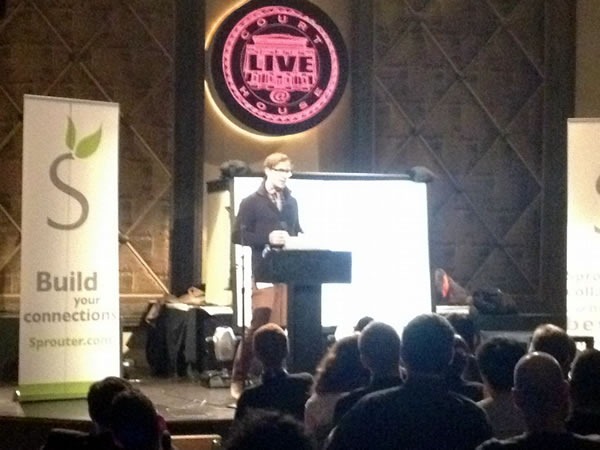
I make it a point to attend a monthly gathering of tech entrepreneurs in Toronto called “Sprout Up”. It’s an event run by Sprouter, a startups-helping-startups forum, and the 350 or so tickets for the event usually sell out a week before. It’s a chance for techies, designers and “suits” to network, and the presentation portion of the evening features local startups showing off their latest work as well as a guest speaker.
Last night’s guest speaker was web designer Daniel Burka, who’s one of the founders of Milk, a company that builds apps. He also cofounded Pownce and was the creative director at Digg. His presentation was both interesting and inspiring, and so I’m sharing my notes and photos here.
Notes from Daniel Burka’s Presentation
- I don’t really consider myself to be an “entrepreneur” or “founder”.
- I think of myself as more of product designer; someone whose job is to shepherd creations from ideation to implementation to improvement.
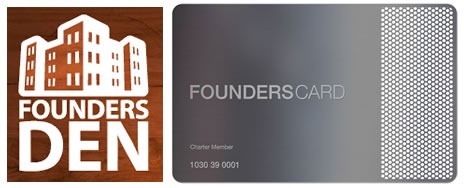
- In Silicon Valley, they really fetishize the idea of “founders”.
- In fact, there’s a group of incubators in a place called Founders Den.
- There’s even a FoundersCard (and I’m ashamed to admit that I have one)!
- This fixation with founders is really just a celebration of raising money: first the angel round, then Series A and Series B…“It’s kind of B.S.”.
- All those people have accomplished is manage to convince someone to give them a few million dollars – it’s not that hard.
- I don’t want to downplay the value of starting up; it’s just that I really value people who build and make worthwhile thing and shepherd them over time.
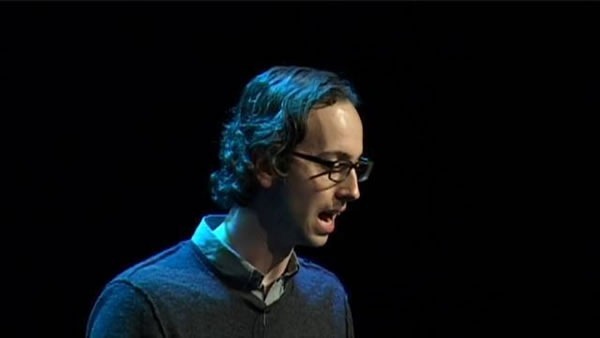 Wilson Miner at the Build Conference.
Wilson Miner at the Build Conference.
- If you get the chance, you should watch designer Wilson Miner’s talk from the Build Conference, When We Build.
- Wilson’s done work for Apple and other places; he’s the designer at Rdio.
- In his presentation, he talked about what drives us as entrepreneurs, designers and product people: it’s that we all have an idea, something we want to make for no other reason than we want it to exist.
- The idea alone isn’t enough. It’s really just an inkling. To see if it truly has merit or even possible, you have to build it.
- There’s a great story in Tony Hsieh’s book about building Zappos, Delivering Happiness.
- Zappos was obvious only in hindsight.
- Tony talked talked to shoe vendors like Nike, trying to convince them to sell shoes to him as if he were a regular shoe store, but the vendors refused to sell to him.
- He built his online shoe store anyway, selling shoes on the internet with no stock. Whenever they sold a pair online, they went to the nearby Foot Locker, bought the shoes there, put them in a Zappos box and shipped them.
- It’s all about proof: he learned by jumping in and from experience.
- The same idea is in Facebook’s “Hacker Way” philosophy: Code wins arguments!
- The same thing happens at Milk: they debate an idea for maybe 25 minutes, but then they try to implement to see if it can or can’t be done.
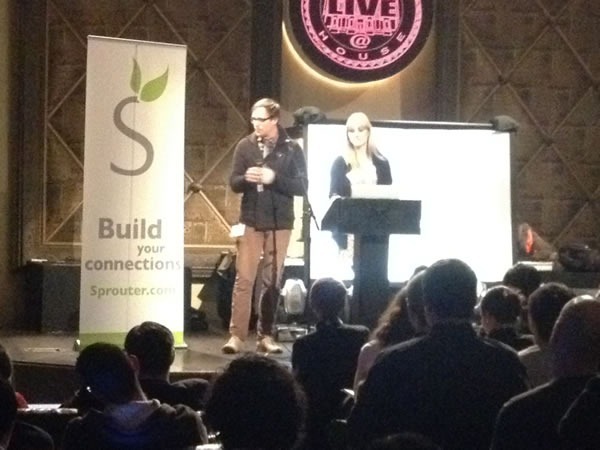
- In my career, I’ve always been focused on the side of making things. It started with things like baking bread.
- I’ve never really had a game plan for my career, but just a few guiding principles. I’ll share some of my advice, which may or may not work for you.
- Every major opportunity that’s come my way has come from taking chances and building something.
- Whitelands Studio was my first job, from 10th grade, in 1996. All the summer jobs in Prince Edward Island were shitty, but my mom told me that museums were looking for help digitizing their collections.
- We knew the museums wouldn’t come to a bunch of kids, so we approached them. We asked them: “If we write the proposals and get the funding, will you let us digitize your collections for you?”
- Everybody then was doing static sites, a long, tedious manual process.
- We had a programmer who grabbed a stock Microsoft Access database – “a piece of shit” – and wrote a program that read data from the database and spat out static sites. It let us do the job in about a month, faster than everyone else. We actually delayed handing in our work so that we looked busier.
- For our first three summers, we did one project, and did two in our final summer.
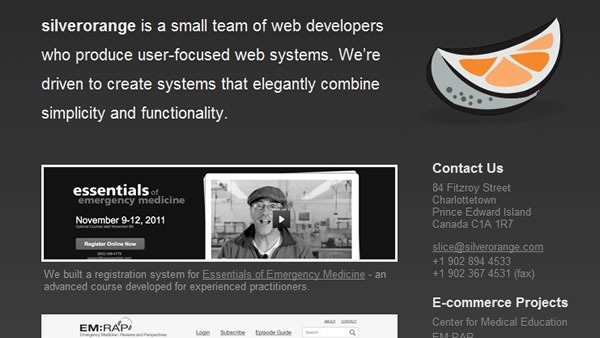
- In 1999, we merged with MetaMedia and formed Silverorange.
- Again, our major pivotal point was taking chances and building things.
- We were a bunch of kids, ages 18 and younger. Nobody would trust us to build anything of significance, and we didn’t want to build sites for the local bed-and-breakfast places.
- One of the things we built was the Silverorange intranet. It was very similar to what Basecamp is today. We submitted it to a Nielsen Norman Group “usable intranet” conference and it won!
- Since Nielsen Norman is a big name in the design world, winning landed us a lot of design work as a result.
- We were trying to find a way to build a more sustainable long-term business.
- We wanted to get into building large ecommerce systems. There’s lots of money in that. The problem was that we kept getting beating out in bidding by companies from Toronto — because they were from Toronto. “They must be good, because they’re from a big city” was the thinking.
- Went to Veseys, who sold seeds online, and told them “Your site’s a piece of shit. We’ll rebuild it for no money up front – we’ll just take a commission”. We made them a lot of money. They got mad since they made a lot of money, they had to pay us a lot of money.
- This sort of work is now the backbone of Silverorange’s business. It’s recession proof and long-term.

- One of our guys was a Firefox fanboy, back when it was still called “Phoenix”.
- He wrote an open letter to Mozilla, saying that while it was a great browser, its branding, identity and look and feel were terrible. He was asking them to fix it.
- They wrote back and said “You’re right: you fix it!”
- They got together the Mozilla visual identity team and made us part of the process of rebranding Phoenix into Firefox. We did the primary design of Mozilla.org in 2004.
- This got Silverorange even more attention in San Francisco, and that’s how we landed Digg as a client.
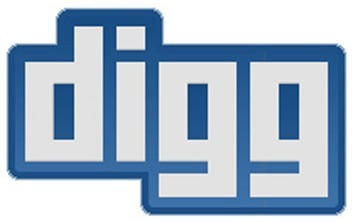
- Digg got started when Kevin Rose talked to CmdrTaco about building a community-driven news site. CmdrTaco (I can’t say that name with a straight face) told him that there’s no room in the news space for that sort of thing, but he decided to do it anyway.
- He invested his own money – not much, about $10,000 – to the chagrin of his girlfriend, who suggested he spend the money on something more practical, like a house. He used his being on TechTV as a way to promote Digg.
- Once again, it was the approach of “build it and see what happens”.
- The same thing happened with Pownce: it was about seeing an opportunity and then building something. Back then, it was terrible trying to pass files between people (this was before Dropbox).
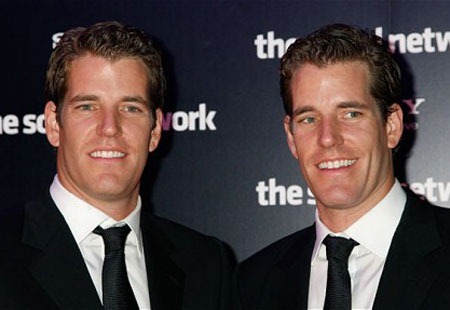
- A little while back, I was in Toronto attending the Mesh Conference and was interviewing Sook-Yin Lee.
- During that interview, I said “ideas are cheap”, and I regret saying it. Coming up with a strong original concept is valuable.
- But: execution is incredibly difficult and it really defines your idea.
- Many people, when they see something implemented say "I the exact same idea 6 months ago!". That’s not true; it’s not the same idea. Execution forces you to adapt the idea and make changes in response to the real world.
- It’s the “Winklevoss problem”: they had a good idea – a social network – but it was Mark Zuckerberg and not "those little scumbags" who made Facebook. Facebook would probably have been much lamer if they’d made Mark their lackey and just had him build the app they had in mind.
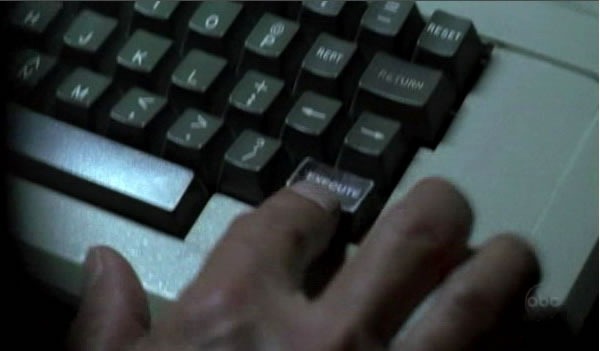
- Execution needs to be tested in the real world. The day you launch, you’ll find flaws. Your users will find flaws.
- You need to watch analytics, look over the stats and get feedback.
- Don’t be afraid to change your product! Stagnation will kill you.
- Gather a team of builders around you. They’re the people who’ll matter most.
- As a company grows and you get above 14 people, you’ll find that some of them will not be in tune with the product you’re trying to build. People tend to focus on their expertise and forget they’re all in the same ship. You get things like teams pitching things that have nothing to do with the core product.
- The people you want around you are the kind who see what needs fixing and then go and fix it.
- If you’re the founder, your job is to encourage that kind of building. It’s not your job to be the chief architect, it’s to facilitate the building.
- Facebook did this when they brought in Chris Cox, a developer, to do HR for them. They redefined HR as a team that supported engineers in their effort to build products.
- Think of your each of your people as an architect.
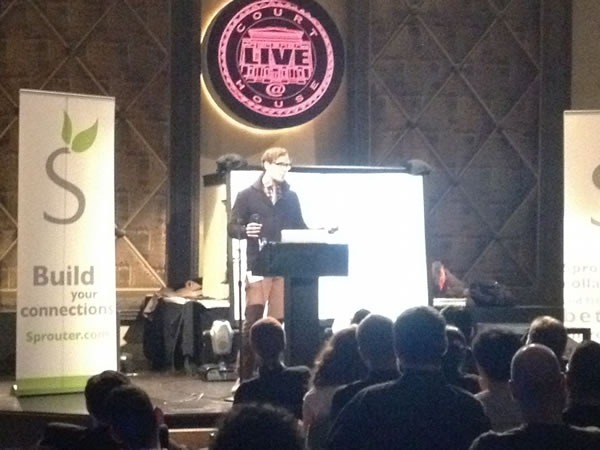
- There’s no excuse not to be a builder these days. The tools to build products are incredibly cheap! For people like me, there’s Balsamiq, Prototypes and other design software. You don’t have to wait for financing. You just have to build.
3 replies on “Daniel Burka’s Presentation at Sprout Up”
[…] At last night’s Sprout Up event (which I wrote about here), Daniel Burka recommended that we watch Wilson Miner’s (former designer at Apple, now a designer at Rdio) presentation titled When We Build, which he gave at the Build conference in Northern Ireland. It’s about the importance of making things, and if you’re looking for inspiration, it’s a great place to start. It’s a beautiful presentation all ‘round, with beautiful words, pictures and even music. […]
[…] designer and founder, and his take on the future of the internet. Our friend Joey Devilla wrote an amazing post chronicling what Daniel Burka spoke about, so we won’t repeat every detail here, but there […]
Joey, really great of you to post your notes. You made it a lot easier for all of us who attended.
Cheers!